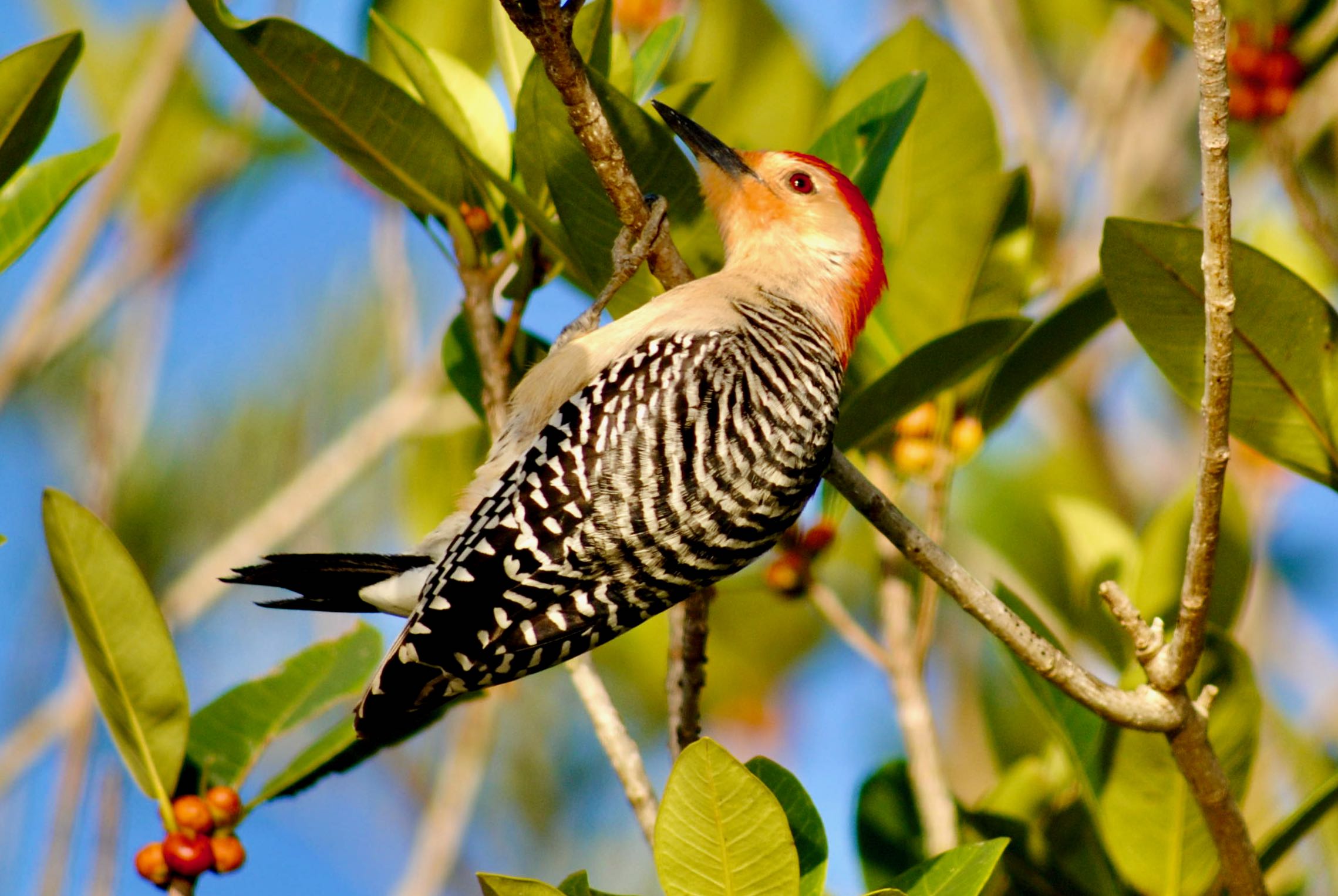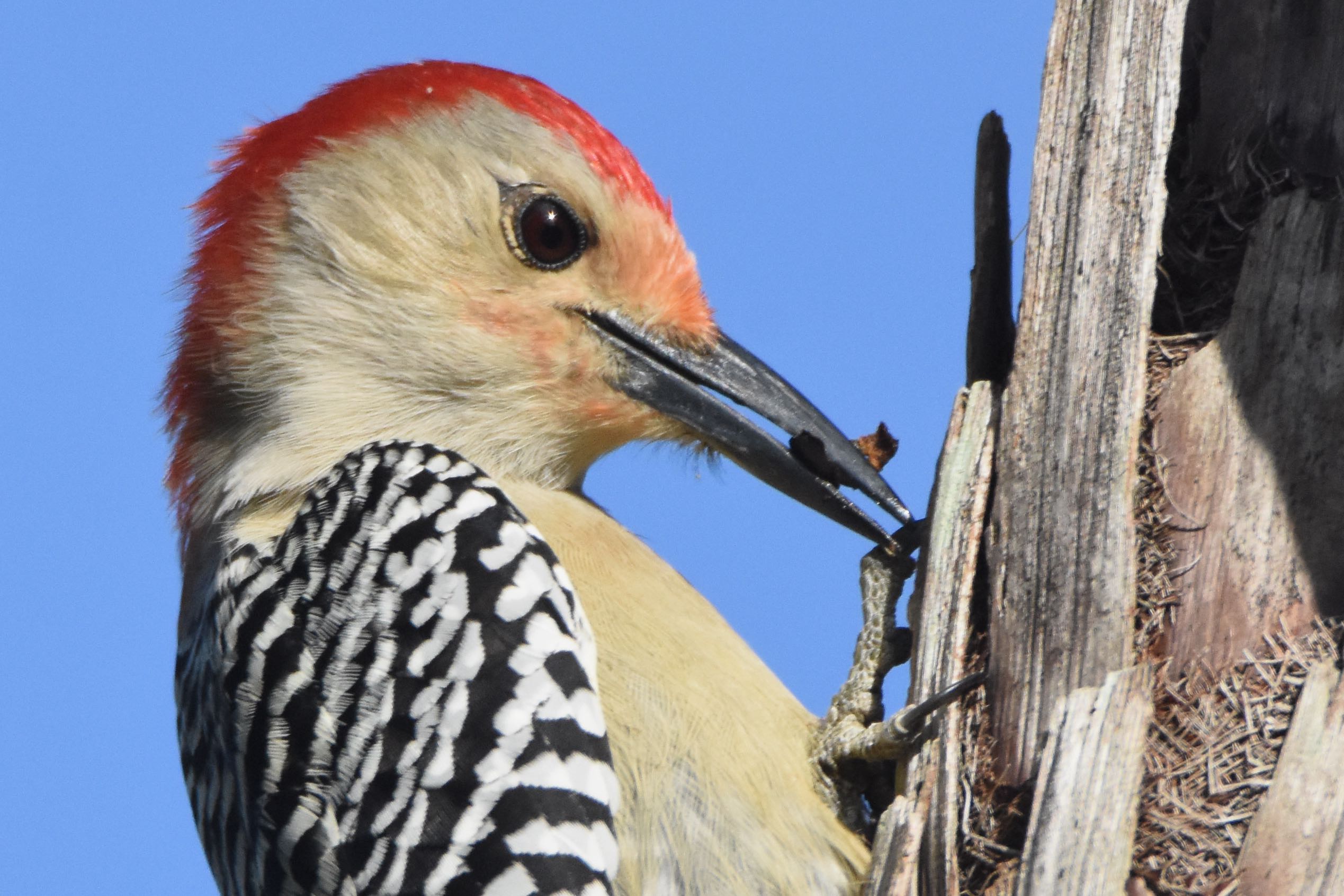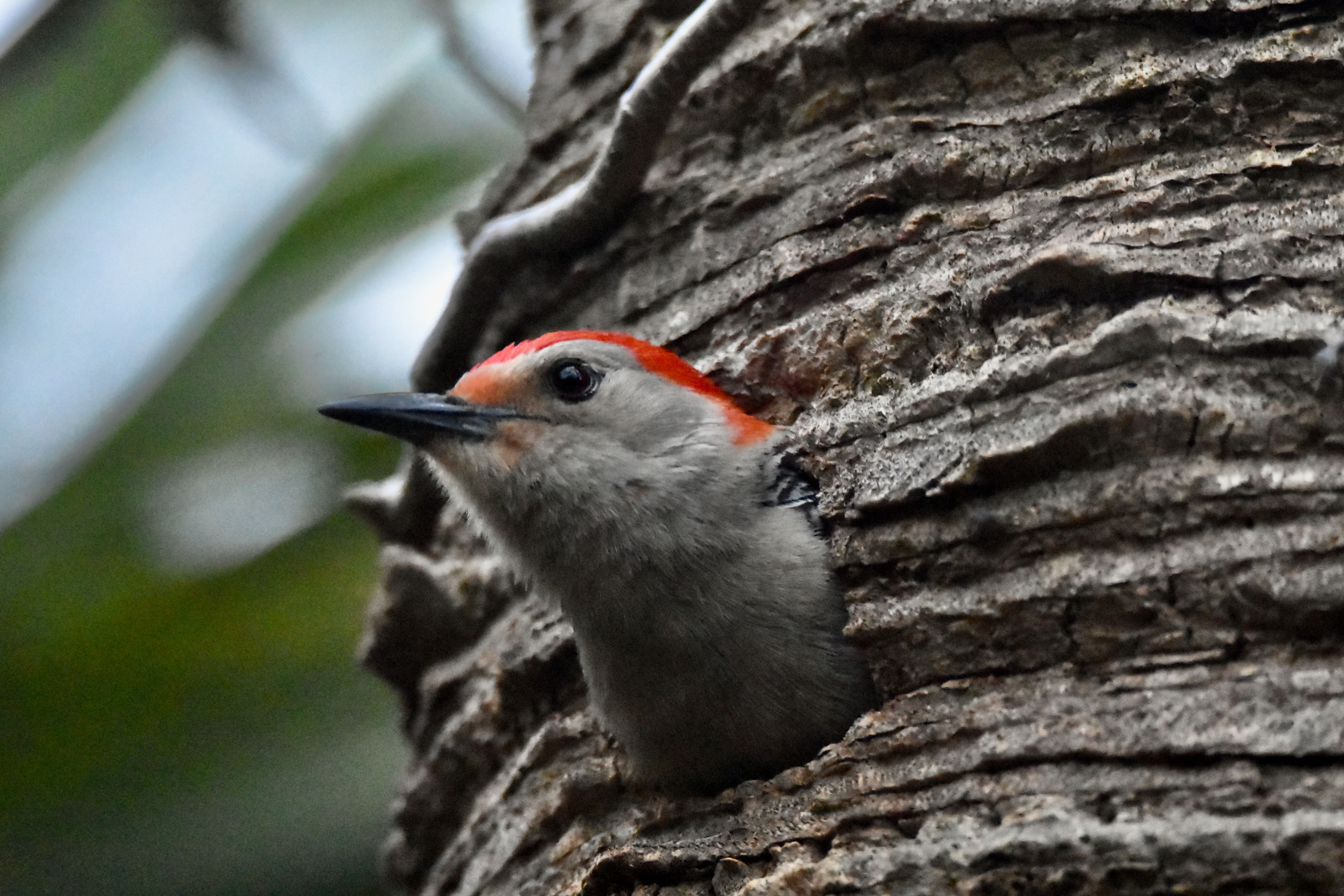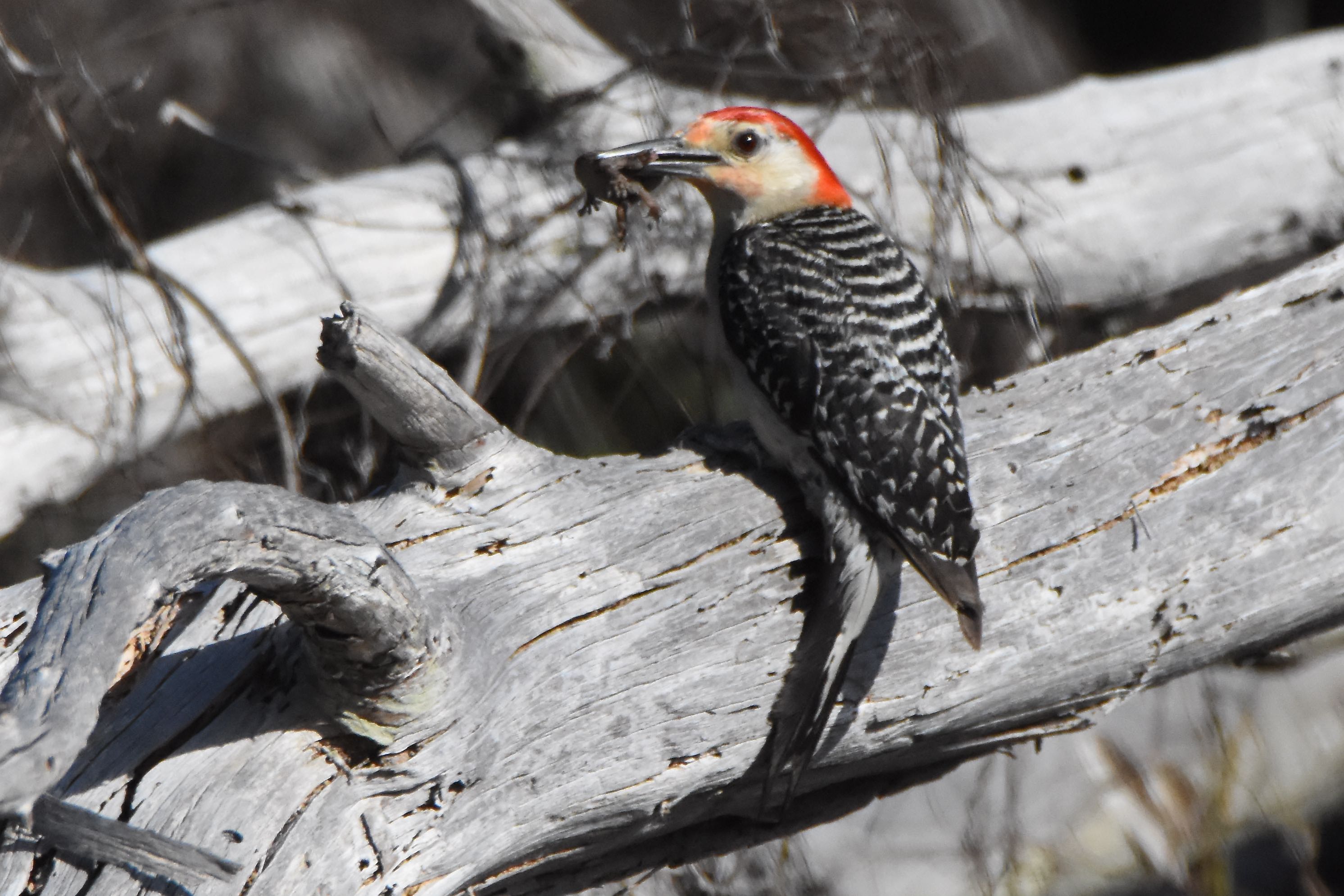
Red-bellied woodpecker, photographed at Green Cay Nature Center, Boynton Beach, Palm Beach County, in April 2012.
The head is red; the belly is on the pale side. But despite the seemingly obvious, this is the red-bellied woodpecker, Melanerpes carolinus, not the red-headed woodpecker.
The red-bellied is, by our observations, the most common of the woodpeckers likely to be seen in South Florida, and the Florida Fish and Wildlife Conservation Commission agrees. It roams pretty much anywhere there are trees, in the woods and in the 'burbs. You might come across one in your backyard.
The red-bellied is found throughout much of the eastern United States as far north as Minnesota and New England and as far west as Texas and Nebraska. It does not migrate anywhere in its range. It has the same combination of reds, blacks and whites that most other North American woodpeckers have. What differentiates the red-bellied from the red-headed are two obvious features. The head on the red-headed is completely red, face and all, and the back is completely black. The face of a red-bellied is mostly white with only a hint of red, and its back has black-and-white stripes. The red-headed, by the way, is the only member of the woodpecker family with a completely red head.
Back to our guy, the red-bellied. It's a medium-sized woodpecker, with a body length of about nine inches and a wingspan of less than 18 inches. It has a fairly long and stout bill and a slightly red tinge to an otherwise pale underside. That slight physical trait is the inspiration for the common name.
Dinner for the red-bellied includes insects and spiders, nuts, seeds and various fruits and occasionally small fish and nestling birds. They can be acrobats of sorts, manuevering, up, down and around, even upside down as they hunt for food. This page includes photos of a red-bellied woodpecker dining on the fruit of a strangler fig tree. Red-bellied are more likely to pick through the surface of a tree in search of food than to pound a hole in one.
However, red-bellieds do excavate their nest sites in the trunk of a dead tree or a dead limb of a live tree. The male starts work before finding a mate; he'll call, then softly tap the tree to attract a female, who will join in if she's interested in him and help finish the hole.
Females typically lay between three and five eggs; the parents split incubation duties, which last about two weeks. Both parents feed the young, which are nest- bound for about four weeks. After the offspring fledge, the parents continue to feed them for six more weeks (see photo at left). A pair up north will have one brood per year; in the south, they could have three.
Red-bellied pairs often return to the same holes year after year, or to the same trees, where they'll tap out new homes. Nest holes are a valued commodity in the avian world, and red-bellieds will drive out other species from a site. On the other hand, they're commonly driven out by their arch enemy, the European starling. Red-bellieds will defend their nest site but at times, they'll simply wait until starlings are busy with their own brood before starting their own.
Red-bellied woodpeckers are members of Picidae, the woodpecker family.
Green Cay Nature Center



